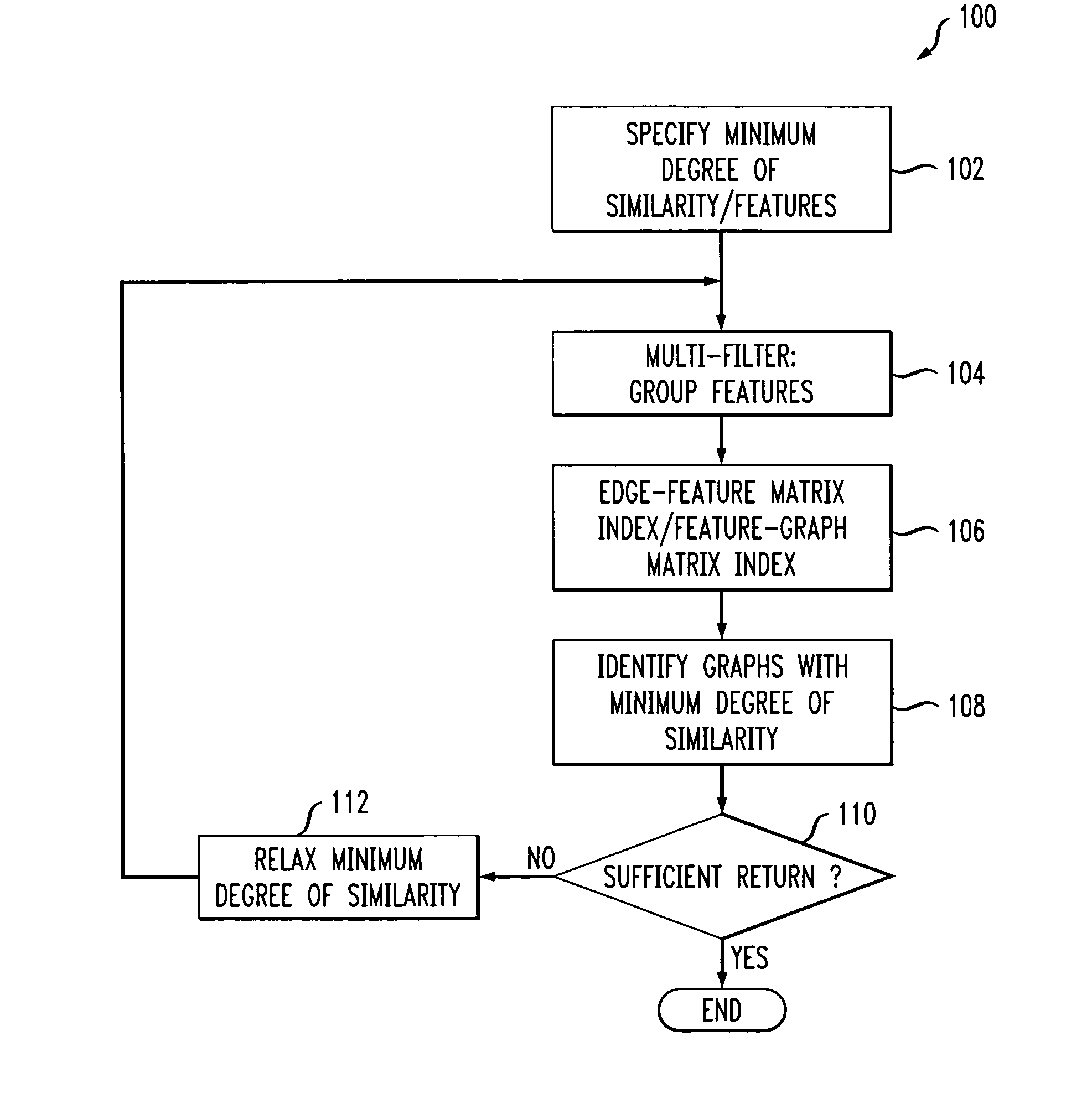System and method for efficiently performing similarity searches of structural data
a similarity search and database technology, applied in the field of similarity search in structural databases, can solve the problems of large, complex structural data, and significant limitations of advanced database system research
- Summary
- Abstract
- Description
- Claims
- Application Information
AI Technical Summary
Benefits of technology
Problems solved by technology
Method used
Image
Examples
Embodiment Construction
[0029]FIG. 1 is a diagram illustrating exemplary methodology 100 for searching graphs in a database. Specifically, methodology 100 may be employed to search graphs in a database against one or more query graphs. The term “graph,” as used herein, is intended to include, but not be limited to, any form of structural data comprising one or more features, such as, graph data sets, images, sequences and combinations comprising at least one of the foregoing data forms.
[0030] In step 102, a minimum degree of similarity between the query graph(s) and the graphs in the database is specified. As will be described in detail below, the minimum degree of similarity may be based, at least in part, on one or more features present in the query graph and the graphs in the database. By way of example only, suitable features, e.g., for basing graph similarity, include, but are not limited to, structures indexed in structural, e.g., graph, databases, paths, edges, discriminative frequent substructures...
PUM
 Login to View More
Login to View More Abstract
Description
Claims
Application Information
 Login to View More
Login to View More - R&D
- Intellectual Property
- Life Sciences
- Materials
- Tech Scout
- Unparalleled Data Quality
- Higher Quality Content
- 60% Fewer Hallucinations
Browse by: Latest US Patents, China's latest patents, Technical Efficacy Thesaurus, Application Domain, Technology Topic, Popular Technical Reports.
© 2025 PatSnap. All rights reserved.Legal|Privacy policy|Modern Slavery Act Transparency Statement|Sitemap|About US| Contact US: help@patsnap.com



